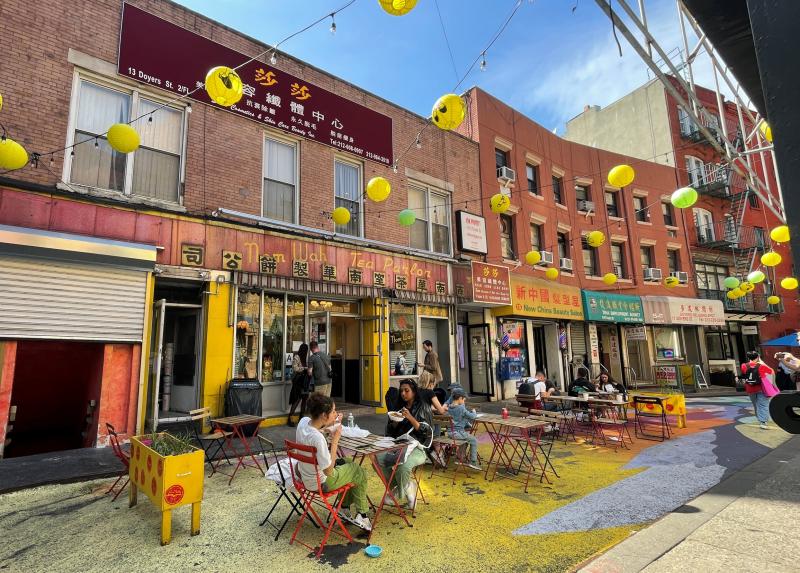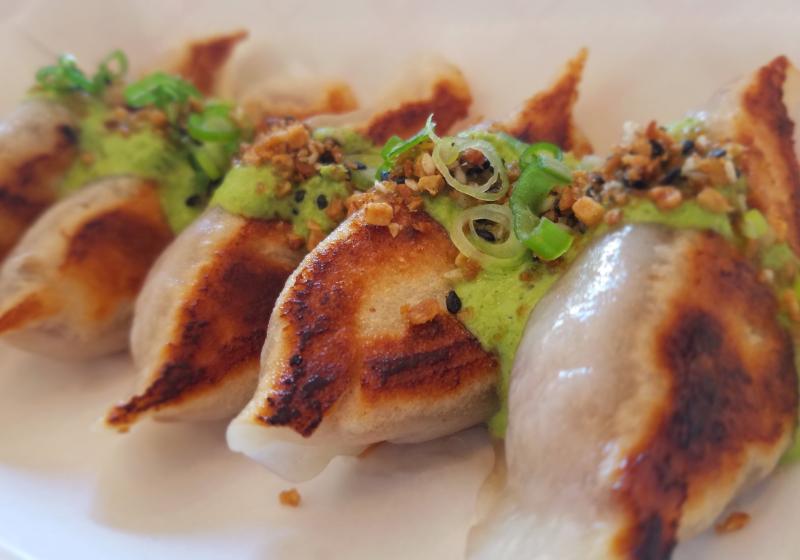Chinese restaurants in the United States have been through a lot in the last few years. Mass temporary closures that turned into permanent ones. Employees walking into work to find racist messages spray painted across their windows. Skeleton crews left behind by hospitality workers who quit en masse, gentrification and inflation causing rent rates to skyrocket in cultural neighborhoods, hours cut short for fear of violence late at night, and more.
These challenges and losses have been reported at length, but the future for these restaurants is gradually coming into focus. Some experts are hopeful they will bounce back or evolve, but it could still be a long road ahead.
For Asian American and Pacific Islander (AAPI) Heritage Month, Bar & Restaurant takes a look at some of the issues and challenges that Chinese and Asian-American operators face.

Recap of the Recent Past
In the spring of 2020, it was the norm for independent restaurants to suffer major financial losses, regardless of who owned the business or the type of cuisine served. In-house dining was no longer an option, and with the tight profit margins that small restaurants normally operate with, forced temporary closure for even a few weeks was a death sentence for many.
But because of misplaced blame toward Chinese and Asian Americans for the COVID-19 pandemic, Chinese American restaurants in particular suffered even worse than others. As one example, Bloomberg reported consumers were disproportionately less interested in visiting restaurants located in the Chinatown districts of major U.S. cities, compared with other restaurants in the same metro areas, during 2020. Data from IBISWorld shows an estimated 23 percent decrease in the total market size of Chinese American restaurants from 2019 to 2020.
Plus, in the early months of the pandemic, business owners who are people of color faced more difficulty getting approved for Paycheck Protection Program (PPP) loans than their white peers. Federal aid can be a make-it-or-break-it resource, with up to half of independent restaurateurs still expecting to close within months if they do not receive it.
For many Chinese American restaurants that survived the first devastating spring of COVID-19, the following months were still brutal, marked by xenophobia, anti-Asian hate, crime and violence toward staff, as documented by Stop AAPI Hate and other initiatives. Those months have now turned into years.
Calculating Risk and Resilience
In the fight to remain standing throughout the pandemic, some restaurants have had to make tough decisions.Chef Chris Cheung owns East Wind Snack Shop, an eatery concept inspired by the old cafes he remembers fondly from the Chinatown of his youth. East Wind has two locations in Brooklyn, N.Y. In the early months of the pandemic, while so many similar businesses were closing, East Wind stayed open. Cheung wanted his shop to be a reliable, accessible place for the community to get food. Most of his staff quit, but the remaining workers wore double masks and gloves, adhered to numerous other safety protocols, and “trudged on” to do whatever they had to do and keep going.
“I appreciate [the staff] every day as I think back on it,” Cheung said. “They made the decision to stick with it rather than stay home and wait it out.”
Cheung was aware of the risks of staying open, though.
“Being a small business owner, and a mom-and-pop style business owner, you have to make decisions very carefully,” he said. “If I got COVID, the business was going to close temporarily or even permanently.”
Restaurants like East Wind that are still open are not necessarily out of the woods, though. Many restaurants are still hanging by a thread with small profit margins, so every dollar counts.

Innovation: A Possible Way Forward Chinese American Food and Restaurants
Some restaurants will rebound from the last few years, and others, unfortunately, will not. Some are employing a strategy to evolve and accommodate modern diners whose tastes are expanding.
Mike Lee is co-CEO at Alpha Food Labs, a company that builds and launches new food products and strategies. As Lee was growing up, his parents, aunt and uncle owned restaurants where his foundational knowledge of Chinese American food was developed. He is now known in the industry as an expert on food innovation.
Lee said the Chinese American restaurants he sees now that are trending or up-and-coming look quite different from the family restaurants he grew up in. Decades ago, most Chinese American restaurants sought to offer classic options like chop suey and crab rangoon, because customers sought familiarity on the menu. But now, many diners are looking for options that are inventive and unique. The restaurants that are most in-demand are the ones that have adapted, Lee has observed.
As a New York local, Lee calls out restaurants such as Bonnie’s, Win Son and 886 for their skill in carrying Asian American food into a new era.
“All of those are a really cool kind of remix of the old school … restaurants I grew up with,” he said. “They’re paying good reverence to the Chinese American roots of that food, and I think that’s really exciting.”
Lee has also noticed creativity at another New York restaurant, Nice Day Chinese Takeout. Nice Day’s chef, Lucas Sin, demonstrates his fundamental expertise in Chinese American cooking with social media content he posts to explain the classic techniques. But he puts a fresh spin on those techniques by creating new dishes, without coming across as gimmicky.
“Here you’ve got a guy like Lucas who understands the basis of how to make a good mapo tofu, but he has the creative gymnastics in his head to say, ‘What if we made this with mac and cheese?’” Lee said.
Lee said innovation might not necessarily become the new baseline expectation for Chinese American restaurants, but it will help keep culinary traditions alive while still allowing for forward momentum.
Uniting to Show Support
One of the best ways to support Asian-owned restaurants is simply by patronizing them — they still need a steady customer base. But some have required more than the revival of restaurant dining to sustain them. As one example of financial scaffolding, an organization called Welcome to Chinatown supplies longevity grants to businesses in Manhattan’s Chinatown, including many restaurants. Or on a broader scale, the AAPISTRONG Restaurant Fund, a partnership project between National ACE and GrubHub, provided grants last year for independent, AAPI-owned restaurants nationwide.
Other groups have organized events to encourage diners to try AAPI-owned restaurants. In Chicago, a group called OCA – Asian Pacific American Advocates is organizing AAPI Restaurant Week this month for the first time. Participating restaurants will offer special menus and promos throughout the event to encourage people to try new cuisines, new dishes, and new spots.
“There are more Chinese restaurants [in the United States] than McDonald’s, Burger King and Wendy’s combined, but our food is sometimes still thought of as foreign or exotic,” said Mabel Menard, president of OCA Greater Chicago. “AAPI restaurant owners are American restaurant owners, and our food is just as American as Irish or Italian food, for example.”
Similarly, Lee expressed confidence in the security of Chinese American food because of the status it has reached as a staple.
“Whether it’s innovative or not, cheap or expensive, it’s this common cornerstone of American eating,” Lee said. “Pizza and Chinese takeout are the two things that people go to when they need something comforting and convenient and tasty.”
The racism-fueled struggles Chinese American restaurants face aren’t new, but they have become particularly heavy during the pandemic. So, to expect a complete recovery in the immediate future might not be quite realistic.
“‘Recover’ is a tough word,” Cheung said. “We have been going through forms of racism, weirdly enough, surrounding our food for many years.”
But he still believes in the resilience and endurance of his Chinese American restaurant community.
“The kind of people we are, we keep going,” he said. “We’ll survive, we’ll thrive, and we’ll come out of this better for it.”
Cat Kerr has supported local cafes in Orlando, Fla. as a public relations manager and barista since 2018. She is a full-time communications professional with a background in news writing, and she’s an occasional contributor to World Tea News and Bar & Restaurant.
Plan to Attend or Participate in
Bar & Restaurant Expo, March 27-29, 2023
To learn about the latest trends, issues and hot topics, and to experience and taste the best products within the bar, restaurant and hospitality industry, plan to attend Bar & Restaurant Expo, March 27-29, 2023 in Las Vegas. Visit BarandRestaurantExpo.com.
To book your sponsorship or exhibit space at Bar & Restaurant Expo, contact:
Veronica Gonnello
(for companies A to G)
e: [email protected]
p: 212-895-8244
Tim Schultz
(for companies H to Q)
e: [email protected]
p: (917) 258-8589
Fadi Alsayegh
(for companies R to Z)
e: [email protected]
p: 917-258-5174
Also, be sure to follow Bar & Restaurant on Facebook and Instagram for all the latest industry news and trends.
